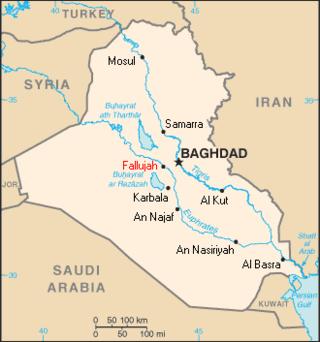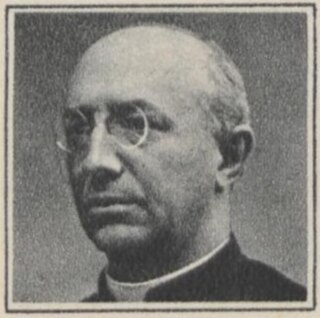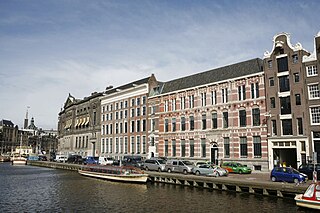Related Research Articles

Hai ben Sherira better known as Hai Gaon, was a medieval Jewish theologian, rabbi and scholar who served as Gaon of the Talmudic academy of Pumbedita during the early 11th century. He was born in 939 and died on March 28, 1038. He received his Talmudic education from his father, Sherira ben Hanina, and in early life acted as his assistant in teaching. In his forty-fourth year he became associated with his father as "av bet din," and with him delivered many joint decisions. According to Sefer HaKabbalah of Rabbi Abraham ben David (Ravad), he was the last of the Geonim.

Moritz Steinschneider was a Moravian bibliographer and Orientalist. He is credited as having invented the term antisemitism.

Samuel David Luzzatto, also known by the Hebrew acronym Shadal, was an Italian-Austrian Jewish scholar, poet, and a member of the Wissenschaft des Judentums movement.
David Rosin was a German Jewish theologian from Rosenberg, Silesia.
Solomon ben Jacob Almoli was a rabbi, physician and Hebrew author of the sixteenth century; lived in the Ottoman Empire, probably in Constantinople. As a physician he seems to have enjoyed quite a reputation, but he is better known as a Hebrew grammarian. He appears to have become a man of wealth in later years, for he published at his own expense numerous grammatical works. Thus in 1529 he published Ibn Ezra's "Yesod Mora," and in 1530 the work "Sefat Yeter" by the same author. To an edition of Ibn Yaḥyah's "Leshon Limmudim" in 1542 he supplied an introductory poem beginning with the words "Reu Sefer." Outside of the frequently reprinted "Pitron Ḥalomot," his other works are extremely rare.
Vidal of Tolosa, alternate spelling Vidal de Toulouse, was a Spanish rabbi and scholar of the late 14th century, and is often referred to by the sobriquet, Harav Ha-Maggid, or the Maggid Mishneh, named for his magnum opus by that name.
Profiat Duran, full Hebrew name Isaac ben Moses haLevi) was a Jewish apologist/polemicist, philosopher, physician, grammarian, and controversialist in the 14th century. He was later sometimes referred to by the sobriquet Efodi (האפודי) through association with his two grammars entitled Ephod. After being forcibly converted to Christianity in 1391, he also appears in official records under his Converso name Honoratus de Bonafide. After escaping Spain, he returned to practicing Judaism openly and wrote several works including polemics against Christianity and grammar.
Simeon ben Zemah Duran, also Tzemach Duran, known as Rashbatz (רשב"ץ) or Tashbatz, was a prominent Jewish scholar, rabbinic authority, and polemicist. He was proficient in various fields, including philosophy, mathematics, natural sciences, astronomy, and medicine. Born in Medieval Spain, he fled with his family to Algeria in the aftermath of the 1391 pogroms that devastated the Jewish community of Spain. In 1408, he became the rabbinic leader of Algerian Jewry, earning widespread recognition for his legal rulings in Spain, North Africa, France, and Italy.
Abraham Benisch was an English Hebraist, editor, and journalist. He wrote numerous works in the domain of Judaism, Biblical studies, biography, and travel, and during a period of nearly forty years contributed weekly articles to the pages of the Jewish Chronicle.
Isaiah ben Elijah di Trani (the Younger) (Hebrew: ישעיה בן אליהו דטראני) was an Italian Talmudist and commentator who lived in the 13th century. He was the grandson, on his mother's side, of Isaiah (ben Mali) di Trani the Elder. He is usually quoted as ריא"ז (= "R. Isaiah Acharon, ז"ל"), or (ריב"א = "R. Isaiah ben Elijah").
Halachoth Gedoloth is a work on Jewish law dating from the Geonic period. It exists in several different recensions, and there are sharply divergent views on its authorship, though the dominant opinion attributes it to Simeon Kayyara.
A Christian Hebraist is a scholar of Hebrew who comes from a Christian family background/belief or is a Jewish adherent of Christianity. The main area of study is that commonly known as the Old Testament to Christians, but Christians have occasionally taken an interest in the Talmud and the Kabbalah.
Moses ibn Tibbon was a Jewish physician, author and translator in Provence. The number of works written by Moses ibn Tibbon suggest that he reached a great age.
Jewish printers were quick to take advantages of the printing press in publishing the Hebrew Bible. While for synagogue services written scrolls were used, the printing press was very soon called into service to provide copies of the Hebrew Bible for private use. All the editions published before the Complutensian Polyglot were edited by Jews; but afterwards, and because of the increased interest excited in the Bible by the Reformation, the work was taken up by Christian scholars and printers; and the editions published by Jews after this time were largely influenced by these Christian publications. It is not possible in the present article to enumerate all the editions, whole or partial, of the Hebrew text. This account is devoted mainly to the incunabula.

Cornelius Nicolaas Petrus Wessels was a Dutch Jesuit, known for his historical works on the early Catholic Missions in Central Asia, specially Tibet, and in the East Indies.

The Bibliotheca Rosenthaliana is the Jewish cultural and historical collection of the University of Amsterdam Special Collections. The foundation of the collection is the personal library of Leeser Rosenthal, whose heirs presented the collection as a gift to the city of Amsterdam in 1880. In 1877 the city library had become the University Library, so the Bibliotheca Rosenthaliana was essentially given to the University. The Bibliotheca Rosenthaliana has since expanded to become the largest collection of its kind in Continental Europe, featuring manuscripts, early printed books, broadsides, ephemera, archives, prints, drawings, newspapers, magazines, journals, and reference books.
Eliah ben Samuel ben Parnes of Stephanow was a Bulgarian Jewish Biblical commentator and poet.
Tanhum ben Joseph of Jerusalem, also known as Tanḥum ha-Yerushalmi (1220–1291), was a 13th-century Hebrew lexicographer and biblical exegete who compiled several Hebrew works, the most notable of which being a lexicon on Mishnaic words entitled Murshid al-kāfī. Tanhum's learning in Jewish studies was so pervasive that he was coined the name "the Abraham ibn Ezra of the Levant."

Joseph Hirsch Dünner was a Dutch Jewish leader and scholar, who served as Chief Rabbi of North Holland.
Benjamin ben Judah of Rome, a member of the prominent Bozecco family, was a Biblical exegete, grammarian, and philosopher. He was the disciple of Joab ben Benjamin ben Solomon. Although his activity lay in the fields of exegesis and grammar, Dov Yarden argues that the poet Immanuel of Rome represents him as an accomplished scientist and philosopher.
References
- ↑ "Clipped From Jackson's Oxford Journal". Jackson's Oxford Journal. 1866-02-24. p. 4. Retrieved 2022-08-19.
- ↑ "Clipped From Jackson's Oxford Journal". Jackson's Oxford Journal. 1869-06-12. p. 4. Retrieved 2022-08-19.
- ↑ "Clipped From The Bradford Observer". The Bradford Observer. 1870-06-21. p. 3. Retrieved 2022-08-19.
- ↑ "University and City Intelligence." Jackson's Oxford Journal [1809], 28 Nov. 1874. British Library Newspapers, link-gale-com.ezproxy.bpl.org/apps/doc/Y3202683109/BNCN?u=mlin_b_bpublic&sid=bookmark-BNCN&xid=77c438ba. Accessed 19 Aug. 2022.
- ↑ "Clipped From Cambridge Independent Press". Cambridge Independent Press. 1880-07-10. p. 8. Retrieved 2022-08-19.
- ↑ College, Brighton (1922). Brighton College Register, (1847-1922).: Nos. 1-5000, with Brief Biographical Notes. Farncombe.
- 1 2 New Library World. Library supply Company. 1960.
- ↑ Galleries, Brighton (England) Public Library, Museums, and Art (1904). Annual Report of the Chief Librarian and Curator.
{{cite book}}: CS1 maint: multiple names: authors list (link) - ↑ Attar, Karen (2016-05-31). Directory of Rare Book and Special Collections in the UK and Republic of Ireland. Facet Publishing. ISBN 978-1-78330-016-7.
- ↑ Alex (2012-02-28). "Our Rare Books collections". Brighton & Hove Libraries Blog. Retrieved 2022-08-20.
- ↑ Ibn Ezra, Abraham ben Meïr; Mathews, H. J. (1874). Abraham Ibn Ezra's commentary on the Canticles, after the first recension. London: Trübner.
- ↑ Löwy, Albert (1877). Miscellany of Hebrew literature. Publications of the Society of Hebrew Literature, pt.1. London: N. Trübner.
- ↑ Israelitische letterbode (in Dutch). M. Roest. 1877.
- ↑ Mathews, Henry John (1879). In memoriam: George Long. Brighton.
{{cite book}}: CS1 maint: location missing publisher (link) - ↑ Compact Memory / Israelietische Letterbode : driemaandelijksch tijdschrift, gewijd ann joodsche wetenschap, geschiedenis en letteren : Vol. 6 (1880). 6 (1880-1881) / onder redactie van M. Roest Mz.. AmsterdamAmsterdam. 1880.
- ↑ Compact Memory / Israelietische Letterbode : driemaandelijksch tijdschrift, gewijd ann joodsche wetenschap, geschiedenis en letteren : Vol. 7 (1881). 7 (1881-1882) / onder redactie van M. Roest Mz.. AmsterdamAmsterdam. 1881.
- ↑ Anecdota Oxoniensia: Semitic series. Clarendon Press. 1882.
- ↑ Compact Memory / Israelietische Letterbode : driemaandelijksch tijdschrift, gewijd ann joodsche wetenschap, geschiedenis en letteren : Vol. 9 (1883). 9 (1883-1884) / onder redactie van M. Roest Mz.. AmsterdamAmsterdam. 1883.
- ↑ College, Brighton (1886). Brighton College Register, Part 1, 1847-63, Nos 1-1000, with Brief Biographical Notices. J. Farncombe.
- ↑ Kimḥi, Joseph; Mathews, H. J. (1887). Sefer ha-galui. Added t.p. :Sepher ha-galuj. Berlin.
{{cite book}}: CS1 maint: location missing publisher (link) - ↑ "Digizeitschriften". www.digizeitschriften.de. Retrieved 2022-08-20.
- ↑ Steinschneider, Moritz (1896). Festschrift zum achtzigsten geburtstage Moritz Steinschneider's. Harvard University. Leipzig, O. Harrassowitz.